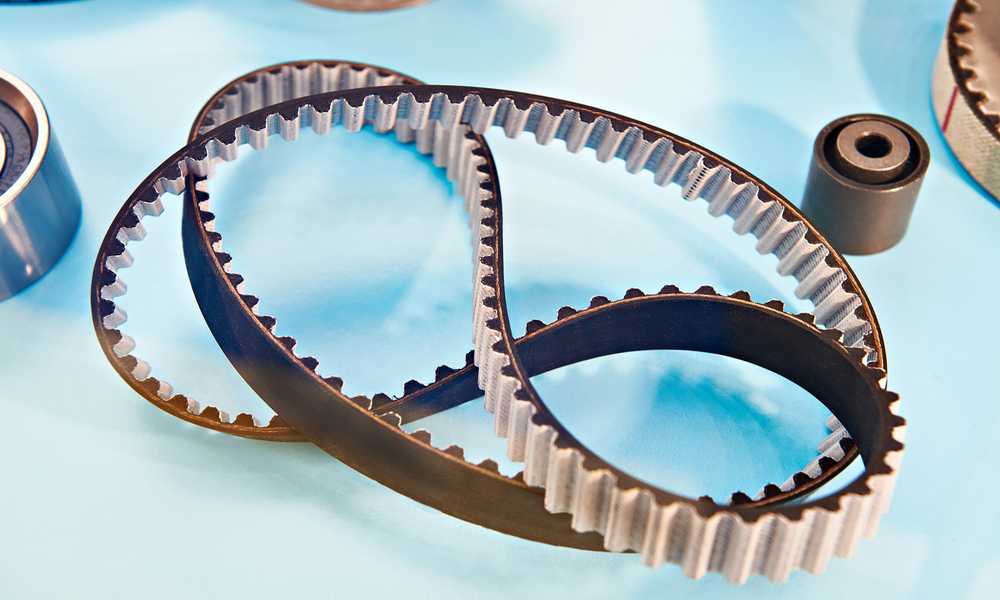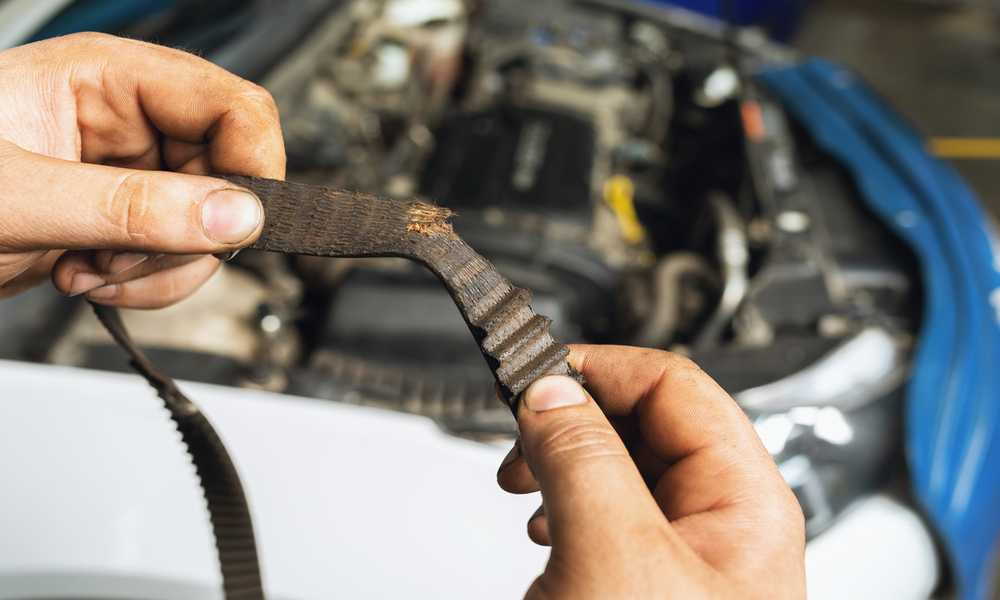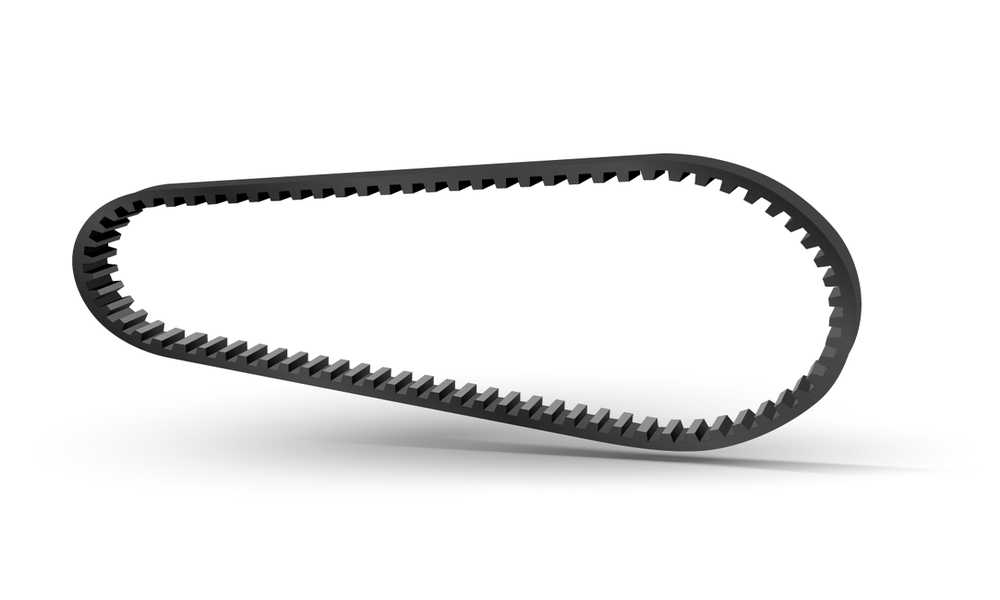Picture this: you’re cruising down the open road, wind in your hair, enjoying the smooth ride of your trusty Honda Pilot. But lurking beneath that sleek exterior is a hidden hero – the timing belt. While often overlooked, this small yet mighty component plays a crucial role in keeping your engine running like a well-oiled machine. So, how much honda pilot timing belt replacement cost? Grab your seatbelt and join us as we dive into the world of timing belts and uncover the answer to this burning question!
What is a timing belt?

The timing belt, also known as a camshaft drive belt, is a crucial component of your Honda Pilot’s engine. It’s essentially a rubber belt with teeth that connects the crankshaft and the camshaft(s). This small but mighty belt plays a vital role in synchronizing the rotation of these two components.
By doing so, it ensures that the valves open and close at precisely the right time during each piston stroke. This precise synchronization allows for optimal combustion, which translates into smooth operation and maximum power output from your engine.
Unlike other belts in your vehicle, such as the serpentine belt responsible for powering accessories like the alternator or air conditioning compressor, the timing belt operates inside an enclosed housing. This keeps it protected from external elements like dirt or debris that could cause damage or premature wear.
Given its critical function in maintaining proper engine performance, it’s essential to keep an eye on your Honda Pilot’s timing belt and ensure timely replacement when necessary. But how do you know when it needs to be replaced? Stay tuned as we explore this question next!
What does a timing belt do?
The timing belt in a Honda Pilot plays a crucial role in the engine’s operation. It is responsible for synchronizing the rotation of the crankshaft and camshaft, ensuring that valves open and close at precisely the right time. This synchronization allows for smooth combustion and prevents any interference between moving parts.
Without a properly functioning timing belt, your Honda Pilot’s engine would be thrown into chaos. The valves could collide with the pistons, causing severe damage to both components. This could lead to expensive repairs or even complete engine failure.
Over time, the timing belt can wear out due to constant exposure to heat, oil, and other elements under the hood of your vehicle. That’s why it’s important to follow manufacturer guidelines regarding when to replace it.
If your Honda Pilot is experiencing issues such as rough idling, misfiring cylinders, or difficulty starting, it could be a sign of a worn-out timing belt. Additionally, if you notice any unusual noises coming from under the hood or find pieces of rubber in your engine oil during an oil change, these are red flags indicating potential problems with your timing belt.
It’s worth noting that not all models of Honda Pilots have had widespread issues with their timing belts. However, regular inspections and preventative maintenance are always recommended for optimal performance and longevity.
To check if your Honda Pilot’s timing belt needs replacement soon:
1) Consult your owner’s manual for mileage intervals
2) Inspect visually – look for signs like cracking or fraying
3) Listen carefully for any strange noises while driving
Replacing a faulty or worn-out timing belt on a 2015 Honda Pilot may vary depending on several factors such as location and labor costs at different repair shops. On average though,
expect prices anywhere from $500-$1000 including parts and labor.
In conclusion (not conclusive), understanding what a timing belt does will help you appreciate its importance in maintaining proper engine function. Regular inspections and timely replacement can save you from expensive repairs or even engine failure
Why is a timing belt really important?
The timing belt may seem like a small and insignificant part of your Honda Pilot’s engine, but it plays a crucial role in keeping everything running smoothly. Essentially, the timing belt is responsible for synchronizing the rotation of the crankshaft and camshaft, ensuring that valves open and close at precisely the right time.
Without a properly functioning timing belt, your engine could experience serious damage. If the timing belt breaks or slips out of place, it can cause pistons to collide with valves, resulting in bent valves or even complete engine failure. This can lead to costly repairs and significant downtime for your vehicle.
Regular maintenance and timely replacement of the timing belt are essential to prevent such issues. Most manufacturers recommend replacing the timing belt between 60,000 and 100,000 miles or every 5-7 years. Neglecting this important maintenance task can put you at risk of major engine damage.
In conclusion (sorry for using this phrase), maintaining a healthy timing belt is vital for your Honda Pilot’s performance and longevity. Don’t overlook its importance; instead, prioritize regular inspections and necessary replacements to avoid costly repairs down the road
When should the timing belt be replaced on a Honda Pilot?
This is a common question that arises among Honda Pilot owners, and for good reason. The timing belt plays a crucial role in the engine’s operation, so it’s important to replace it at the right time.
Typically, Honda recommends replacing the timing belt on a Honda Pilot every 90,000 miles or every 7 years, whichever comes first. However, it’s always best to consult your owner’s manual or check with a certified mechanic for specific recommendations based on your vehicle’s make and model year.
Waiting too long to replace the timing belt can lead to serious consequences. If the timing belt breaks while you’re driving, it can cause extensive damage to your engine and result in costly repairs. That’s why it’s vital to stay proactive about maintenance and adhere to the recommended replacement intervals.
If you’re unsure whether your Honda Pilot needs a new timing belt, there are some warning signs you can look out for. These include unusual noises coming from under the hood, difficulty starting the engine, rough idling or misfiring cylinders.
In summary – knowing when to replace your Honda Pilot Timing Belt is essential for maintaining optimal performance and preventing potential damage down the road. Stay informed about your vehicle’s maintenance schedule and keep an eye out for any warning signs that could indicate an issue with your timing belt.
How do I know if my Honda Pilot timing belt is bad?
The timing belt in your Honda Pilot plays a crucial role in keeping the engine running smoothly. It ensures that the camshafts and crankshaft are properly synchronized, allowing for optimal performance. So how can you tell if your timing belt is bad?
One of the most common signs of a failing timing belt is a ticking or clicking noise coming from the engine area. This could indicate that the belt has become loose or worn out, causing it to slip and make noise.
Another indication of a bad timing belt is difficulty starting your vehicle. If you find yourself needing to crank the engine multiple times before it starts, it could be due to an issue with the timing belt.
Additionally, if you notice any significant loss of power or acceleration in your Honda Pilot, it may be time to check the condition of your timing belt. A worn-out or damaged belt can cause issues with engine performance.
Leaks under your car could also be a sign of a failing timing belt. Oil or coolant leaking onto the belts can cause them to deteriorate faster and lead to failure.
If you experience any of these symptoms, it’s important to have an experienced mechanic inspect and potentially replace your timing belt as soon as possible. Ignoring these warning signs can result in costly repairs down the line and even serious damage to your engine.
Remember, regular maintenance and inspections are key when it comes to ensuring that your Honda Pilot’s timing belt remains in good condition for years to come!
Do Honda Pilot have problems with timing belts?

Timing belts are an essential component of any vehicle’s engine, including the Honda Pilot. While Honda has a reputation for producing reliable cars, it doesn’t mean that their timing belts are immune to issues. Like all vehicles, the timing belt in a Honda Pilot will eventually wear out and require replacement. The lifespan of a timing belt can vary depending on factors such as driving conditions and maintenance history. However, most experts recommend replacing the timing belt every 60,000 to 100,000 miles or after about six years.
Failing to replace a worn-out timing belt can result in serious engine damage if it snaps while the engine is running. This could lead to costly repairs and even complete engine failure. To avoid potential problems with your Honda Pilot’s timing belt, regular inspections and maintenance are crucial. Look out for signs of wear such as fraying or cracking on the belt itself or listen for unusual noises coming from the engine area.
If you suspect that your Honda Pilot’s timing belt may be nearing its end, it is best to consult with a professional mechanic who can assess its condition accurately. They will be able to advise you on whether replacement is necessary based on their expertise and experience.
While there have been reports of some Honda Pilots experiencing issues with their timing belts prematurely failing or causing other complications, these instances appear to be relatively rare compared to other makes and models. As long as proper maintenance procedures are followed and timely replacements are carried out when needed, most owners should not encounter significant problems with their Pilot’s timing belts.
In conclusion, Timely replacement of your Honda Pilot’s timing belt is crucial for maintaining its overall performance and preventing costly repairs down the line. Regular inspections by a qualified mechanic will help identify any signs of wear or imminent failure so that appropriate action can be taken promptly.
How to check Honda Pilot timing belt?
One of the key maintenance tasks for your Honda Pilot is to regularly check the condition of the timing belt. This crucial component plays a vital role in ensuring that the engine runs smoothly and efficiently. So, how can you check if your Honda Pilot’s timing belt needs to be replaced?
First, start by inspecting the physical condition of the timing belt. Look for signs of wear and tear such as cracks or fraying edges. If you notice any damage, it’s a clear indication that it’s time for a replacement. Next, pay attention to any unusual noises coming from the engine area while driving. A squeaking or ticking sound could be an indication that there are issues with the timing belt.
Another way to determine if your timing belt needs replacing is to refer to your vehicle’s maintenance schedule provided by Honda. Typically, they recommend changing the timing belt every 60,000-100,000 miles.
Consult with a professional mechanic who specializes in Honda vehicles. They have extensive knowledge and experience in diagnosing problems related to timing belts and can provide accurate advice on when it should be replaced. Remember, regular inspection and timely replacement of your Honda Pilot’s timing belt can help prevent costly repairs down the road!
Should you replace the timing belt?
The question of whether or not to replace the timing belt on your Honda Pilot is an important one. While it may seem like an unnecessary expense, ignoring the replacement could lead to costly repairs down the line.
First and foremost, it’s crucial to understand that a timing belt is a wear-and-tear item that will eventually need to be replaced. It plays a critical role in synchronizing the engine’s camshaft and crankshaft, ensuring smooth operation of various components.
While there isn’t a specific mileage interval for every Honda Pilot model, experts generally recommend replacing the timing belt between 80,000 and 100,000 miles or around every six years. Neglecting this maintenance can result in severe engine damage if the belt fails unexpectedly.
So how do you know if your Honda Pilot’s timing belt needs replacement? Unfortunately, there are no obvious signs of wear or damage that you can spot visually. That’s why adhering to recommended intervals is essential.
When it comes down to cost versus risk analysis, replacing the timing belt is undoubtedly more affordable than dealing with potential engine problems resulting from its failure. By taking proactive measures and investing in routine maintenance, you can avoid costly repairs later on.
Deciding whether or not to replace your Honda Pilot’s timing belt should prioritize preventative action over reactive repair work. Remember: prevention is always better than cure when it comes to automotive maintenance!
How much Honda Pilot timing belt replacement cost on 2015 model?
Replacing the timing belt on a 2015 Honda Pilot is an essential maintenance task that ensures the smooth operation of your vehicle’s engine. But how much does it cost to replace this critical component? The cost can vary depending on several factors.
The price will depend on whether you choose to have the timing belt replaced at a dealership or an independent mechanic. Dealerships often charge higher labor rates, which can significantly increase the overall cost of the replacement.
The cost will also depend on where you live and the prevailing market rates in your area. Prices may differ between cities and states due to variations in overhead costs and competition among service providers. Keep in mind that additional parts might need replacement during a timing belt replacement job. For example, it is common practice to replace other components like water pumps and tensioners while replacing the timing belt. These extra parts will add to the overall cost.
To get an accurate estimate for your specific situation, it’s best to contact local mechanics or dealerships for quotes. They can provide you with detailed information about their pricing structure and any additional charges that may apply.
Remember, investing in regular maintenance tasks like timing belt replacements is crucial for preserving your Honda Pilot’s performance and avoiding costly engine damage down the line. So don’t overlook this important aspect of car care!
How to diagnose a bad timing belt?

How to diagnose a bad timing belt? Diagnosing a bad timing belt can be tricky, but there are some signs that you can look out for. One of the first things you might notice is a misalignment in your engine’s timing. This could cause your Honda Pilot to run rough or even stall.
Another common symptom of a failing timing belt is a ticking or clicking noise coming from the engine. This could indicate that the belt is loose and not properly keeping everything in sync.
If you experience difficulty starting your vehicle, especially after it has been sitting for an extended period, it could be due to a worn-out timing belt. A faulty one may also cause your engine to overheat, as the coolant pump may not be operating correctly. A visual inspection can also provide clues about the condition of your timing belt. Look for any signs of fraying, cracking, or excessive wear on the surface.
While these symptoms may point towards a bad timing belt, it’s essential to have a professional mechanic inspect and diagnose the issue accurately. They will use specialized tools and techniques to determine if indeed it needs replacement. Remember that regular maintenance and timely replacement of your Honda Pilot’s timing belt are crucial for ensuring its smooth operation and preventing more severe damage down the line.
Timing belt warning signs
Timing belt warning signs can be crucial in determining whether or not it’s time for a replacement. While timing belts are made to last, they do wear out over time and can lead to serious engine damage if not replaced promptly.
One of the most common warning signs of a bad timing belt is a ticking noise coming from the engine. This noise occurs when the belt becomes loose or worn, causing it to slap against other components in the engine. If you hear any unusual noises coming from under the hood, it’s important to have your timing belt inspected.
Another sign of a failing timing belt is difficulty starting your Honda Pilot. If you notice that your vehicle takes longer than usual to start or struggles to turn over, this could be an indication that the timing belt is nearing its breaking point.
Additionally, if you experience a loss of power while driving or notice poor acceleration, it may be due to a worn-out timing belt. The synchronization between the crankshaft and camshaft relies on the proper functioning of the timing belt, so any issues with it can impact engine performance.
Pay attention to any visible signs of wear on the timing belt itself. Cracks, fraying edges, or missing teeth are all indications that immediate replacement is necessary. Remember that these warning signs should never be ignored as they can lead to costly repairs down-the-line! Stay vigilant and keep up with regular maintenance inspections for your Honda Pilot’s timing belt!
Final thoughts

Taking care of your Honda Pilot’s timing belt is essential for the overall performance and longevity of your vehicle. A properly functioning timing belt ensures that the engine components work in sync, preventing any potential damage or costly repairs.
Regular maintenance and timely replacement of the timing belt are crucial to avoid any unexpected breakdowns. While the cost may vary depending on various factors such as location, labor costs, and additional parts replacements, it is important not to overlook this vital aspect of car maintenance.
If you notice any warning signs or suspect that your Honda Pilot’s timing belt needs replacing, it is best to consult with a professional mechanic who can accurately diagnose the issue and provide guidance on the appropriate course of action.
Remember that prevention is always better than cure when it comes to automotive maintenance. By staying proactive and scheduling regular inspections, you can save yourself from potentially expensive repairs down the line.
So, keep an eye out for any signs indicating a bad timing belt, stay vigilant with scheduled replacements based on manufacturer recommendations, and always prioritize safety by ensuring that your Honda Pilot’s timing belt remains in optimal condition.
By taking these precautions and investing in proper maintenance practices when it comes to your Honda Pilot’s timing belt replacement cost will be a small price compared to potential damages caused by neglecting this critical component. Keep your vehicle running smoothly and enjoy many more miles on the road!



